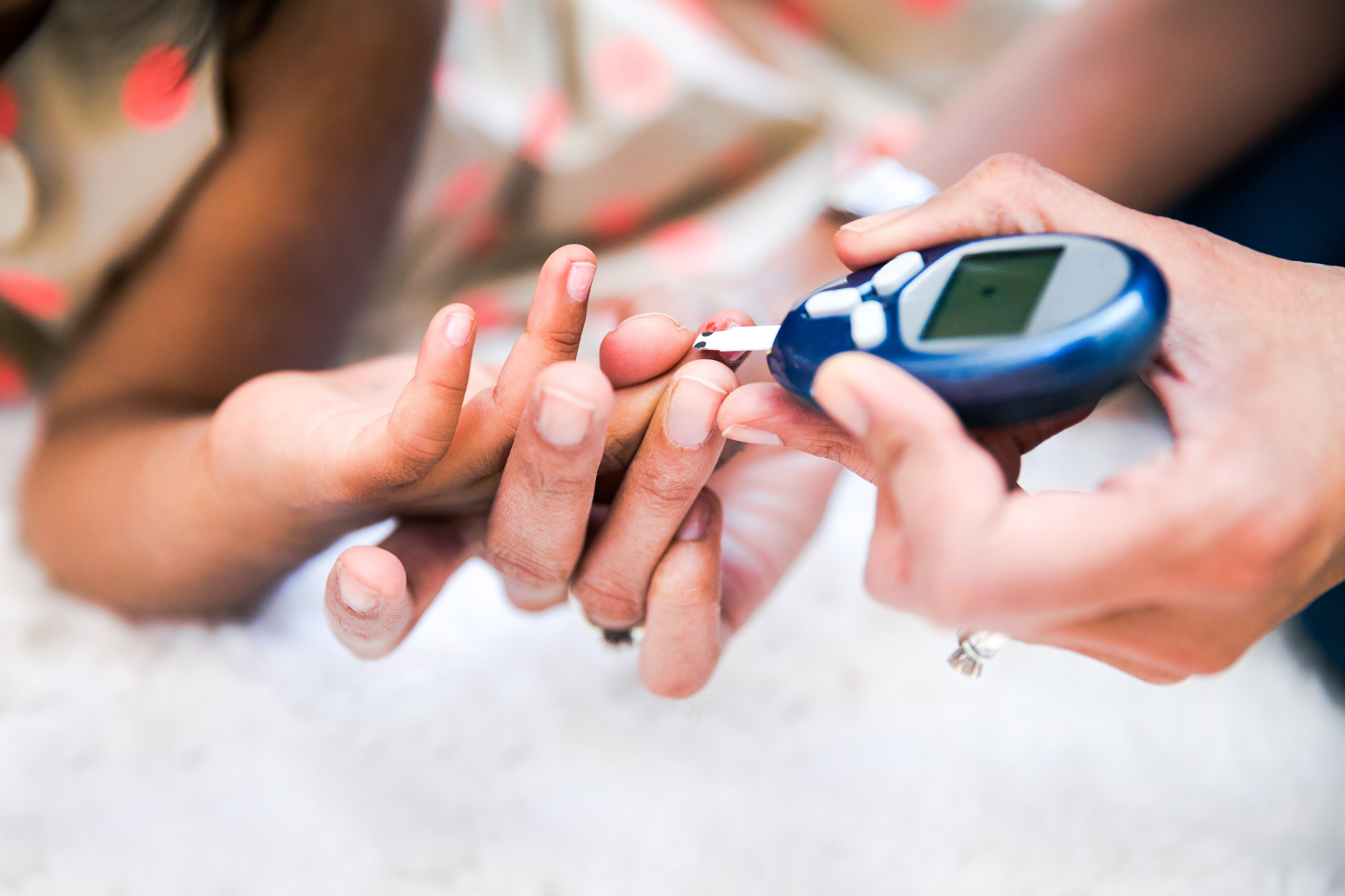Babies and toddlers — whether they have diabetes or not — generally:
- determine thoughts by what they see and hear
- begin to develop a sense of themselves, first by gaining a trust in their environment as infants, and then by testing this environment in the next few years
- enhance their knowledge of the world around them by constantly exploring, asking questions, and developing language
- become more curious and independent, choosing some activities and rejecting others.
Diabetes care in young children
Blood sugar targets
Diabetes care in children younger than six years old involves a balance between what is ideal — close to normal
blood glucose (sugar) readings — and what is safe and practical.
The target range for these young children is to achieve a pre-meal blood sugar level between 6 and 10 mmol/L. This range allows good blood sugar control while reducing the risk of a severe “low blood sugar” (hypoglycemia). A tighter range of blood sugar targets could lead to severe hypoglycemic episodes because infants and toddlers cannot yet recognize the symptoms of hypoglycemia. Repeated episodes of severe hypoglycemia in these children may lead to mild intellectual or learning impairment later in life.

Changes in eating habits
Very young children often have changing appetites. They do not always eat the same amount of food from day to day. You should take that into account in your diabetes care routine. If blood sugar levels before meals are allowed to go slightly higher than you would want for older children, the baby or toddler is still likely to remain safe even during periods of food refusal or picky eating. Parents will be less worried and frustrated, and mealtime will be more pleasant.
For safety’s sake, young children should eat at regular meal and snack times, having at least three meals and three snacks a day. Setting up a meal structure, which does not have to be rigid, is a requirement.
As children grow they become more predictable in their eating. They can also start to recognize and describe their low blood sugar symptoms. At that time blood sugar level targets also change. More structure in meal planning becomes both possible and necessary.
Making injection time go smoothly
Children of all ages sometimes go through periods when they cry, squirm, and try to avoid insulin injections and finger pricks. More often they are angry about being held still or having their play interrupted. Remember how hard it is just to wipe a toddler’s nose! They may also be reacting to the fear and anxiety they sense in you. Here are some helpful hints for making injection time go more smoothly:
- Try to take a matter-of-fact approach to the insulin injections and finger pricks. Remember that each time you give insulin or do a finger prick you are helping your child stay healthy.
- Be quick, calm, and reassuring when you carry out these routines.
- Reduce your child’s anxious time by getting the dose and/or equipment ready before you involve your child.
- If possible, go where your child is playing to cause less disruption.
- Crying, protests and other delaying tactics can happen. By involving your child in the process, you can reduce these delays.
- Position your child in such a way (for example, on your lap) so that you can reach the part of their body that you need to but they do not feel trapped or held down.
- Try having your child give a pretend injection or finger poke to a doll or stuffed animal at the same time as they get their own injection or finger poke. This way they do not feel alone and have a sense of control.
- Get the needle or finger prick over with quickly. Delaying it only prolongs the experience for everyone.
- Give your child a big hug and kiss after you give the needle, even if they did not cooperate.
Signs of a healthy infant or toddler with diabetes
How do parents and others who care for your children know that everything is going well? Look for the following:
- Normal growth and weight gain as assessed by your team for developmental milestones. It can be rolling over, sitting up, crawling, standing, walking, and talking at about the expected age
- No symptoms of high blood sugar levels (overly wet diapers, unusual thirst)
- Good energy
- Few mild hypoglycemic events and no severe ones
- No ketones in the urine
- Blood sugar readings in the range of 6mmol/L to 10mmol/L most of the time
- A happy and secure child
Impact of diabetes on an infant, toddler, or preschooler
Young children with diabetes go through the same stages of development as their friends without diabetes. However, the routines and tasks needed for good diabetes care may influence and sometimes interfere with this development. All parents of young children with diabetes worry about the effects of diabetes on their development as individuals, and how they will cope with the condition as they grow older.
Parents are often concerned about:
- The fact that their young child cannot talk about symptoms of hypoglycemia (for example, is the toddler experiencing hypoglycemia or having a temper tantrum?)
- Giving meals and snacks on time and in the same amounts (toddlers with picky appetites can cause stress at meal times)
- Dealing with their own and their child’s anxiety about the finger pricks for blood glucose checks and needles if on insulin injections
- Developing a treatment plan that does not interfere with the child’s normal daily activities, including naps
Try to balance your child’s need for support against the risk of overprotection and being excluded from activities they would normally do at that age. Praise your child for any sign of cooperation.
Do not hesitate to consult your child’s diabetes team if you need help in managing these challenges.

